Safety in the workplace 2023: A comprehensive guide for companies
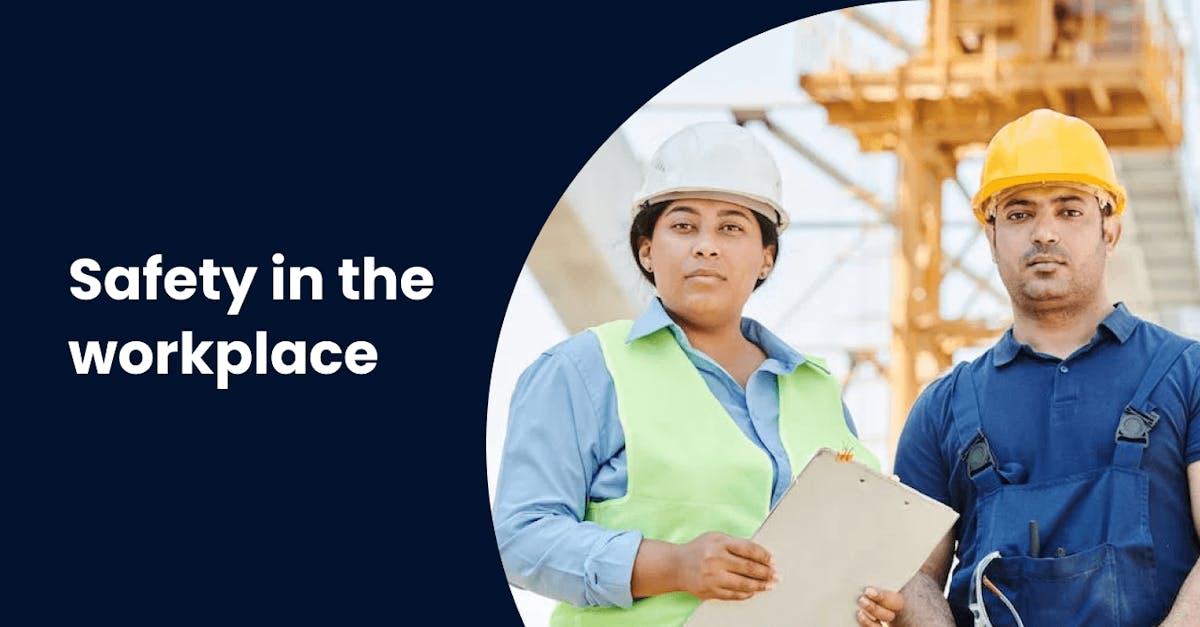
As an employer, your top priority should be the safety and well-being of your workforce. It's your responsibility to create a workplace where hazards are minimized and risks are effectively managed.
By fostering a safe environment, you're not only protecting your workers from harm and unnecessary stress, but also empowering them to perform their tasks with confidence and peace of mind.
In this comprehensive guide, we're diving into the nitty-gritty of safety in the workplace for the year 2023. From developing training programs to implementing regular safety audits and inspections, you'll discover practical steps to protect your workforce from common accidents and hazards.
We’ll also explore the best safety learning tools and programs that can help you establish a culture of safety in your workplace.
Importance of workplace safety in 2023
Workplace accidents and injuries can cost businesses a huge amount of money. And we’re talking about thousands of dollars each year in medical expenses, legal fees, and lost productivity, among many others.

To give you an idea of the scale, the National Safety Council reported a whopping $167 billion as the total cost of work injuries in 2021 alone. If this happens to your business, it can seriously dent your bottom line.
But here's the good news: when you make workplace safety a priority, you have the power to significantly reduce those costs and keep your financial well-being intact. For a smooth and controlled financial management, payroll software can be integrated.
Beyond legal and financial considerations, workplace safety also impacts employee morale and productivity. By making safety a core value in your organization, you’re able to build an environment where your team feels valued, supported, and inspired to perform at their best.
In 2023, it’s also important to stay up to date with the latest safety regulations and best practices. After all, the world’s constantly changing. New risks and challenges are popping up left and right.
By taking an active role in addressing such changes, you can protect your workers from new and emerging workplace hazards, and guarantee their safety in the long run.
Increase workplace safety with the help of the best safety learning tool. Try EdApp’s best features today.
The most common workplace hazards and how to prevent and control them
Needless to say, knowing the most common workplace hazards is absolutely important. From electrical to fall, fire, chemical, and ergonomic hazards, each comes with unique risks that can lead to injuries or health issues if you and your team aren’t aware of them.
To help you out, here’s a list of the most common hazards found in workplaces. Learn how to address each of these hazards and build a safer environment for your workforce.
Electrical hazards
Electrical hazards involve the presence of exposed wires, faulty equipment, or inadequate wiring systems. They can lead to electric shocks, burns, or even fatal injuries if they’re not handled the right way.

Solution: Among the best ways to minimize these hazards is by regularly inspecting electrical equipment. It’s important that all tools are properly grounded and regularly inspected.
You can also train your employees and touch on electrical safety training topics such as OSHA’s electrical regulations, appropriate personal protective equipment (PPE) to use, electrical emergency response, and more.
Fall hazards
Workers are at risk of falling when they're exposed to unprotected edges, slippery surfaces, or poor fall protection systems. Fall injuries can range from small sprains and bruises to more serious fractures, dislocations, or brain damage.

Solution: Start by enforcing the use of safety harnesses, guardrails, and non-slip surfaces to secure reliable protection. Keep walkways clear and install clear signage to mark hazardous areas.
Regular training on fall protection is also useful. Make sure to cover topics like safe ladder use and safety tips when working on roofs, scaffolding, or any other areas with a high risk of falling.
Fire hazards
Fire hazards, when left unchecked, can contribute to the outburst or escalation of fire. These can include flammable materials that easily ignite, faulty electrical systems that can cause sparks or short circuits, and improper storage or handling of combustible substances. This may lead to injuries, property damage, and worse, potential loss of life.

Solution: Having robust fire prevention and emergency preparedness measures coupled with good fire safety training can help lessen these risks. It’s also crucial to install and maintain fire alarm systems, create a fire emergency plan, conduct regular fire drills, and educate employees on emergency evacuation procedures.
Chemical hazards
Workers who deal with hazardous substances such as corrosive chemicals, toxic materials, or flammable liquids face the highest risk of chemical hazards. Exposure to these substances can result in respiratory problems, skin irritation, chemical burns, or long-term health issues.
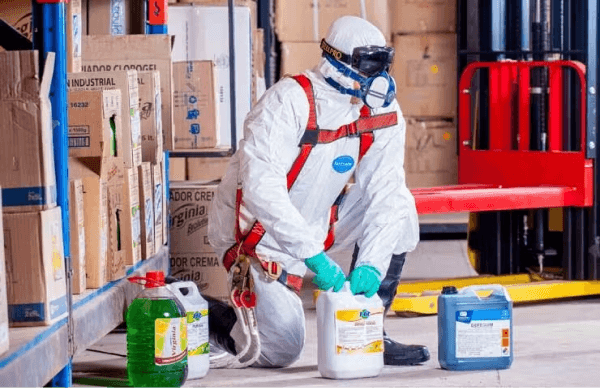
Solution: Establish comprehensive chemical safety protocols. Implement a well-rounded chemical management system that discusses the proper labeling, storage, and handling of chemicals.
Equally important is delivering chemical safety training to your employees, educating them on how to read safety data sheets (SDS) and use the right PPE.
Ergonomic hazards
Ergonomic hazards relate to poor workplace design or improper ergonomic practices, leading to musculoskeletal disorders, strains, or repetitive motion injuries. This can happen by maintaining awkward postures, heavy lifting, or inadequate workstation setup can all result in these injuries and disorders.

Solution: Emphasizing the importance of ergonomics assessments and employee safety training can go a long way to preventing ergonomic hazards. It’s also highly recommended to invest in ergonomic equipment, such as adjustable chairs and desks, to promote a comfortable working environment.
6 tips to improve safety in the workplace
Take your workplace safety to the next level with these valuable tips we've compiled for you. Implement these safety recommendations to actively address potential risks in your workplace and foster a friendlier and safer environment for your team. Let’s dive in!
1. Develop training programs on workplace safety
Creating a safe workplace culture starts with developing comprehensive training programs that cover the most important safety training topics. This can be anything from OSHA rules and regulations to specific practices and procedures that are relevant to your business.

And to keep everyone in the loop and make sure they're up to speed on safety protocols, it’s crucial that these training sessions are scheduled regularly. This will keep your team's knowledge fresh and updated, giving you peace of mind that safety remains a top priority in your business.
2. Conduct regular safety meetings
Gathering your team for regular safety talks or meetings is an effective way to address safety concerns and discuss potential workplace hazards. It's a valuable opportunity to open up important safety topics for work, such as slips, trips, and falls, workplace ergonomics, electrical safety, and more.

During this activity, it’s important to encourage open dialogue and employee participation. Ask your team to share their insights, ask questions, and contribute their ideas. When everyone feels involved, they become more invested in creating a safer workplace for themselves and their colleagues.
3. Create effective communication strategies
Having clear channels of communication to relay safety-related information to your workers is a great way to improve their safety skills and essentially foster a culture of safety.

It doesn't have to be a complex undertaking. You can effectively share safety reminders, updates, and crucial guidelines through simple methods such as safety bulletins, posters, newsletters, or digital platforms.
When managing a team working with chemicals, hazard communication is an absolute necessity. Make sure your workers have the necessary knowledge and information to identify chemical hazards and take proactive measures to prevent or minimize harm.
To support their learning, you can explore EdApp's list of HAZCOM training courses, which offer valuable resources to share with your team.
4. Promote a behavior-based safety approach
Behavior-based safety is an approach that puts individual responsibility at the forefront of workplace safety. It’s about shifting the focus from relying solely on rules and regulations to encouraging everyone in your team to actively identify and address hazards in their daily actions.

To foster this type of culture in your workplace, it’s important to have your leaders set a powerful example by practicing and advocating for safe behaviors. You can also involve your workers in safety committees, hazard identification processes, and behavior-based safety training sessions.
Another great idea is to schedule regular meetings dedicated to discussing key behavior-based safety topics. You and your team can focus on important aspects like identifying and managing workplace hazards and reviewing updated safety protocols.
5. Educate your team on how to use power tools and heavy equipment
If your team frequently works with power tools and heavy equipment, then they need to know how to properly use these tools safely and follow the necessary operating procedures. By making sure they have the knowledge and skills to handle such equipment, you empower them to work efficiently while minimizing the risk of accidents or injuries.

6. Conduct regular safety audits and inspections
Conducting regular safety audits and inspections with safety professionals should be a no-brainer. These assessments serve as valuable tools to evaluate the effectiveness of your safety procedures, identify any areas that require improvement, and maintain compliance with safety regulations.

During safety audits and inspections, safety professionals use various methods to assess safety in the workplace. They may use checklists to identify which safety practices are effective and which ones are lacking.
Additionally, they may conduct walkthrough tests, where they examine different elements in the workplace such as equipment, machinery, and storage areas. These evaluations help assess the overall safety level in the workplace and give valuable insights for enhancing and updating safety measures as necessary.
3 Top safety learning tools to consider
Safety learning tools can be used to create training, modules, or safety videos and educate your workers on safety protocols, procedures, and best practices. They can help equip your employees with the knowledge and skills needed to identify and mitigate workplace hazards, reduce the risk of accidents, injuries, and costly incidents.
You can also use them to foster a sense of individual responsibility and accountability among your team and ultimately create a safer and more productive work environment.
Let’s take a look at some of the best safety learning tools in the market today.
1. EdApp
EdApp, as the best safety learning tool today, offers a free course creator tool that you can use to build safety training courses and videos and increase your team’s safety awareness.

Plus, it has a free library where you can import and edit ready-made safety courses, including safety induction training courses, fire safety, behavior-based safety programs, warehouse safety training, and more. The mobile responsive design of these courses promises the best learning experience for learners. They can access the course through their smartphones and tablets without having to worry about compatibility issues.
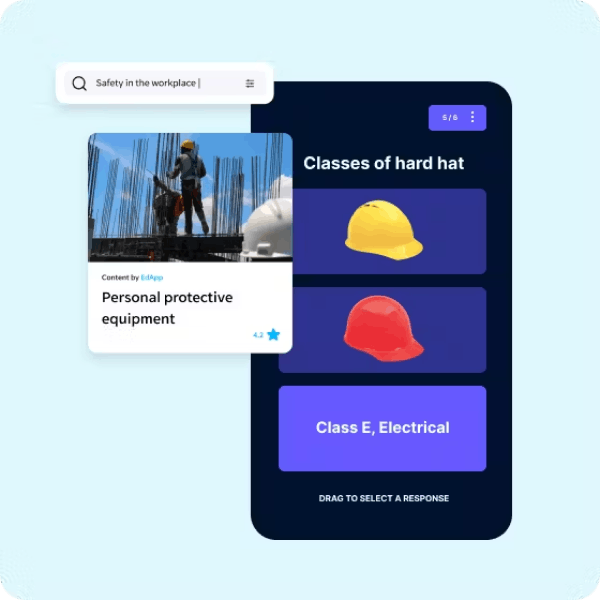
This safety training app also allows you to create customizable certificates. You can use this feature to reward workers who’ve successfully completed their mandatory training and identify those who’ve earned expertise in certain areas. Additionally, your certificates can be tailored to fit your branding guidelines.

The best part is that you can conveniently handle your reporting and analytics directly through the app. With everything in one place, it streamlines the process and saves you time and effort in managing and evaluating your safety programs.

Try EdApp today to foster a culture of safety in your workplace!
2. SET Safety
SET Safety is a great place to find comprehensive safety certification courses. With over 1800 courses available, you can be sure that your team receives training that meets or exceeds CSA, ANSI, OH&S, and OSHA standards. Some of the topics their courses cover include fall protection, confined space entry, defensive driving, and more.
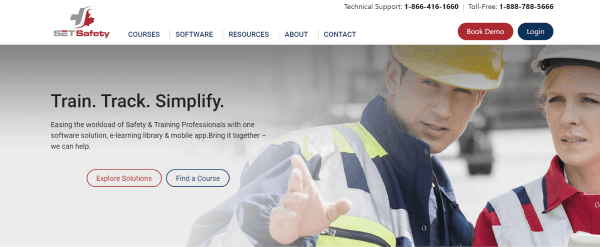
They also offer an intuitive safety LMS tool that empowers you to create custom safety courses, quizzes, and assessments from scratch.
3. Vector Solutions
Vector Solutions has made its name known for its popular safety courses with certificates, which aim to guide workers through the industry’s best practices and standards such as OSHA, EPA, and more. What makes this safety training software unique is its innovative use of 3D animation in these courses, allowing for immersive and engaging learning experiences.

Top safety courses that you can share with your team
If you're in need of pre-made safety training courses to quickly share with your team, you've come to the right place. We’ve handpicked the best safety courses that can help enhance your team's understanding of workplace hazards and teach them essential safety practices.
Safety in the Workplace by EdApp
EdApp’s Safety in the Workplace conveniently works as a safety manual template and a safety course. It includes a comprehensive look at the importance of safety and health in the workplace, alongside some legal and safety requirements that your company and workers should adhere to. It also goes over essential safety compliance topics, including safe lifting practices, proper use of personal protective equipment (PPE), and effective prevention of slips, trips, and falls.
This site safety management training course can be edited to include practices and safety policies specific to your business.
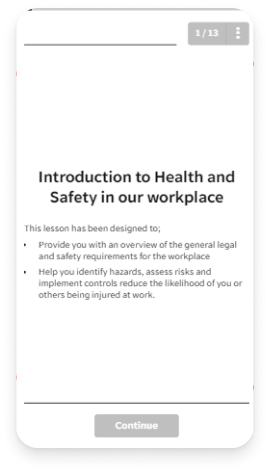
Warehouse Safety by EdApp
EdApp's Warehouse Safety course covers essential warehouse safety training topics such as warehouse workflow and operations and the proper use of PPEs. It’ll also teach your workers the importance of clear signs, markings, and visibility to prevent accidents and guarantee smooth traffic flow within the warehouse.

Fall Protection by EdApp
Educate your workers on the importance of fall protection with the help of the Fall Protection by EdApp. This construction safety training drills down the most common hazards faced by those who work at heights, like falling objects, falls from tripping, and falling through holes.
It also lays out various fall protection systems including guardrails, safety nets, and personal fall arrest systems that are used to keep workers from falling off platforms.
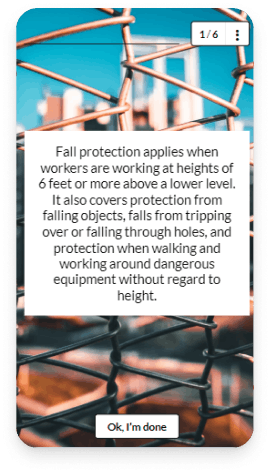
Confined Spaces by EdApp
If you’re looking for a safety training course for miners, then you might want to check out EdApp’s Confined Spaces.
Here, your workforce will get to explore general work hazards present in confined spaces. It’ll teach them the best safety procedures and practices to eliminate or at least control these workplace hazards. They’ll also learn how to perform rescue duties in case of site emergencies.

OSHA for Workers (US only)
Educating your workers about Occupational Safety and Health Administration (OSHA) safety standards and their rights on the job plays a crucial part in establishing a robust workplace safety culture. And for that, EdApp’s OSHA for Workers (US only) course can lend a hand.
This American safety program goes into detail about the meaning and importance of OSHA. Additionally, it covers the rights of your employees while they are at work and how they can report an unsafe working environment.
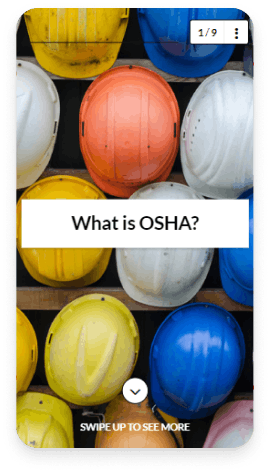
Key takeaway
Prioritizing safety in the workplace is not only a legal and financial necessity but also a means to enhance employee morale and productivity. By staying updated on safety regulations and best practices in 2023, companies can reduce risks and hazards, reduce costs, and create a culture of safety.
From addressing common workplace hazards to implementing training programs, conducting regular inspections, and using effective safety learning tools, you can foster a safer and more secure environment for your workforce.
Author
Jen Avelino
Jen is a learning expert at EdApp, a mobile-based training platform that helps corporates and businesses bring their training solutions to the next level. She carries an extensive writing experience in a variety of fields, including architecture, the gig economy, and computer software. Outside of work, she enjoys her free time watching her favorite series and documentaries, reading motivational books, and cross-stitching.
